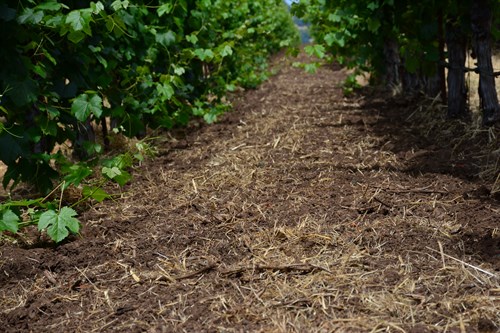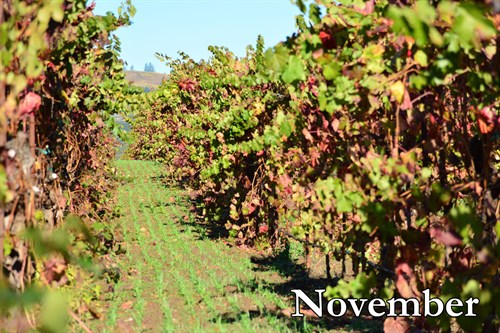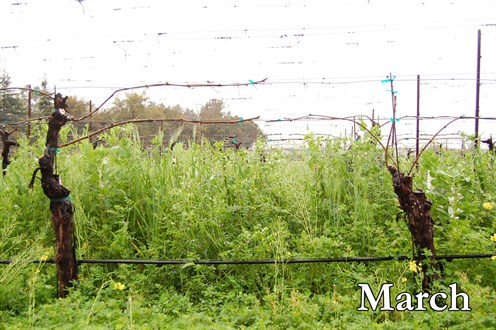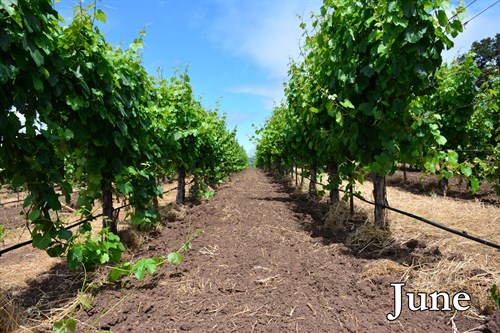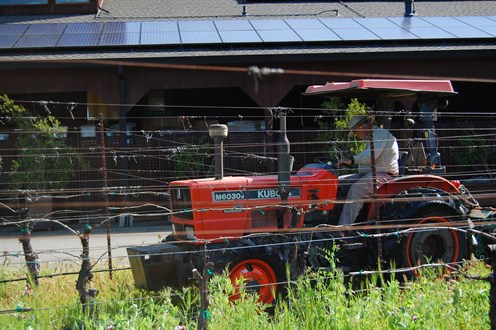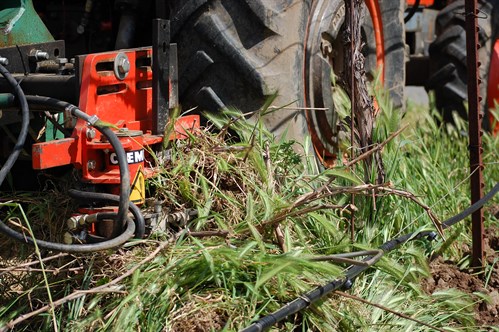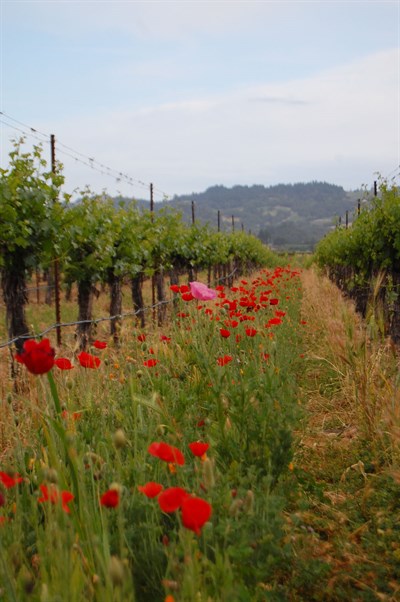Cover Crop
- June 9, 2015
Driving through the Wine Country, you may notice some vineyards are void of any vegetation on the vineyard floor, while others have grass and weeds growing between the rows, and still others are a mixture of these styles with rows alternating between cultivated and uncultivated land. You might also notice that beneath some rows the soil is untilled but bare while others show signs of cultivation. Why is that? Vineyard practices vary from grower to grower. The methods we employ are motivated by a focus on vineyard sustainability - our desire to enrich the soil and promote a healthy environment for our vines, thereby preserving the land for generations to come. We choose to cultivate every other row and to cultivate beneath the vines.
After Harvest, we seed every other row with a cover crop called “Organic Soil Builder” which is comprised of a mixture of Nitrogen fixing legumes including peas, beans and vetch. We plant in the Fall and the cover crop grows through the Winter before we till the organic matter back into the soil in the Spring.
Incorporating this special mixture of plants enriches the soil with nutrients and biomass. These same rows are seeded annually for 3-5 years, and then we switch and begin seeding OSB in the rows that have been left uncultivated during that time. When we make this change we plant a mixture of grasses and clovers in the rows that have had OSB. These plants give us a stable platform upon which to operate our tractors and reduces soil compaction. Deciding when to make these changes is a bit of an art with timing based primarily on the weather.
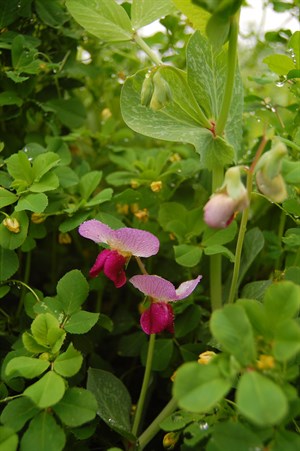
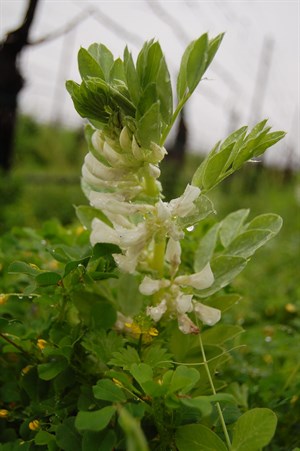
So what about the cultivation under the vines? Vines compete with neighboring plants for resources. If nothing is done to control weeds growing beneath the vines they will suffer from this competition. We could use herbicides to eliminate this competition, but we prefer a more organic approach to weeding, so we do not use any herbicides in the vineyard. Instead we use two different machines to weed beneath the vines, but occasionally our crew needs to follow with shovels.
There is another threat to healthy vines that must be mitigated: pest insects. Fortunately Nature has a cure: predatory insects. We invite these good bugs to the vineyard by planting a mixture of flowers that provide habitat as well as an alternative food source (nectar) so that once they’ve finished with the pests they are motivated to stick around in case any others decide to show up. We plant a mixture of a dozen different flowers, known as an “insectary blend”, every 10 – 12 rows that is sure to please predators like ladybugs, predatory wasps and lacewings.
Hopefully this provides some useful information for your next drive through the Wine Country. When you come visit us, depending on the season, you can look for the OSB growing or the bare soil where it has been disked back in and Nature is using that material to enrich the soil. If you’re here in the Spring you can look for the flowers of our insectary rows, always a visual treat. Or you might turn your attention to the soil directly beneath the vines and know that machinery has reduced the competition instead of chemistry. Our dedication to farming sustainably gives us the grapes that we make into wine for you to enjoy. Our goal is to make sure that continues for generations!





